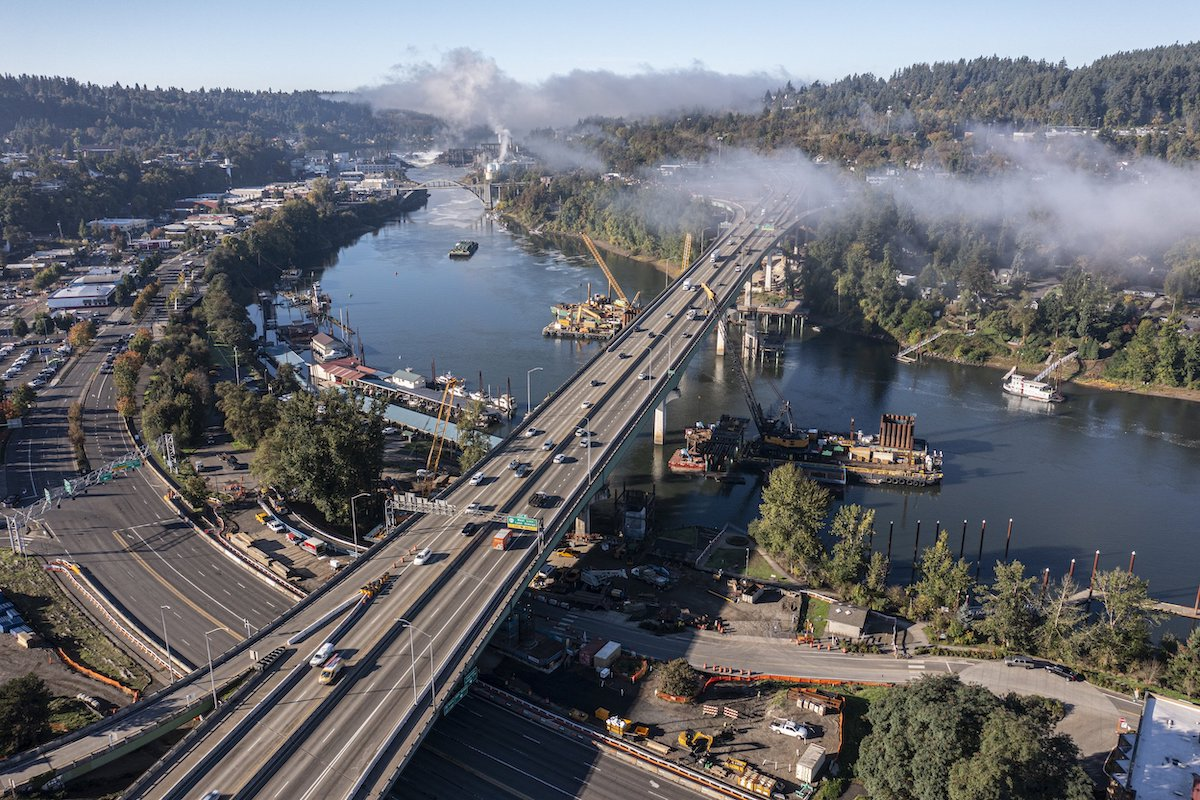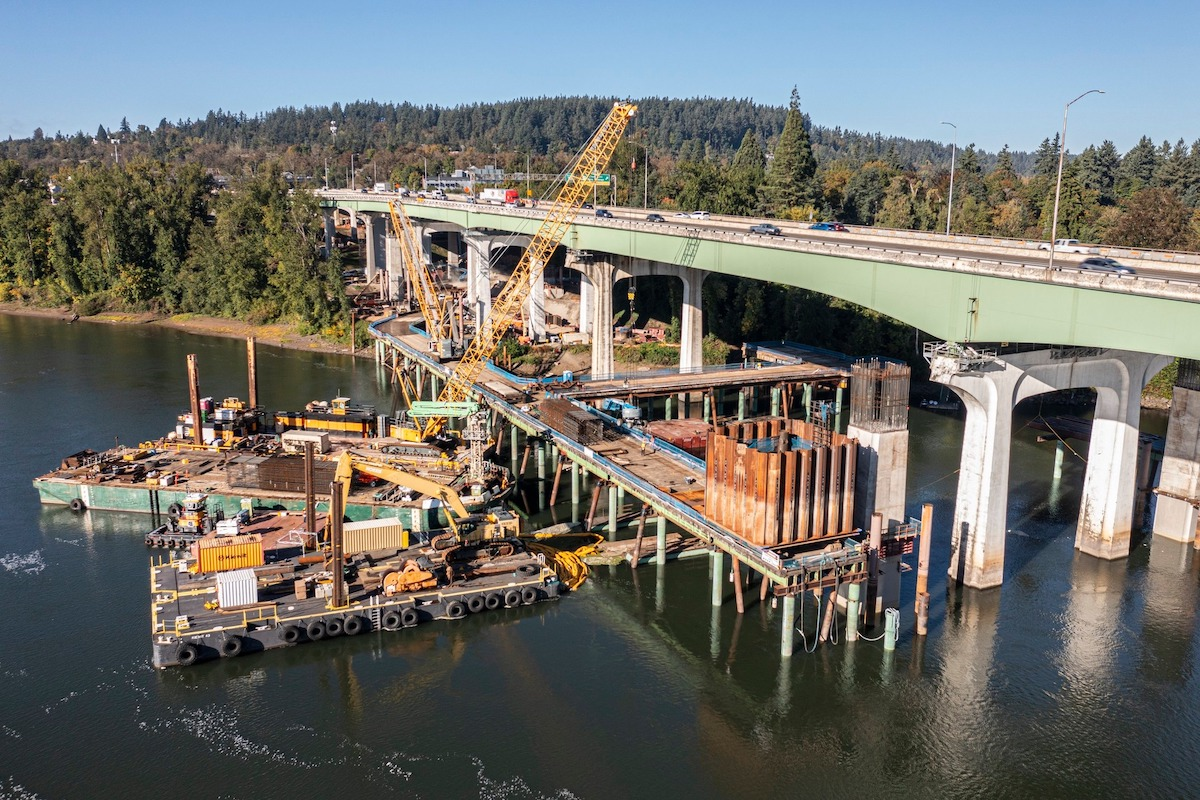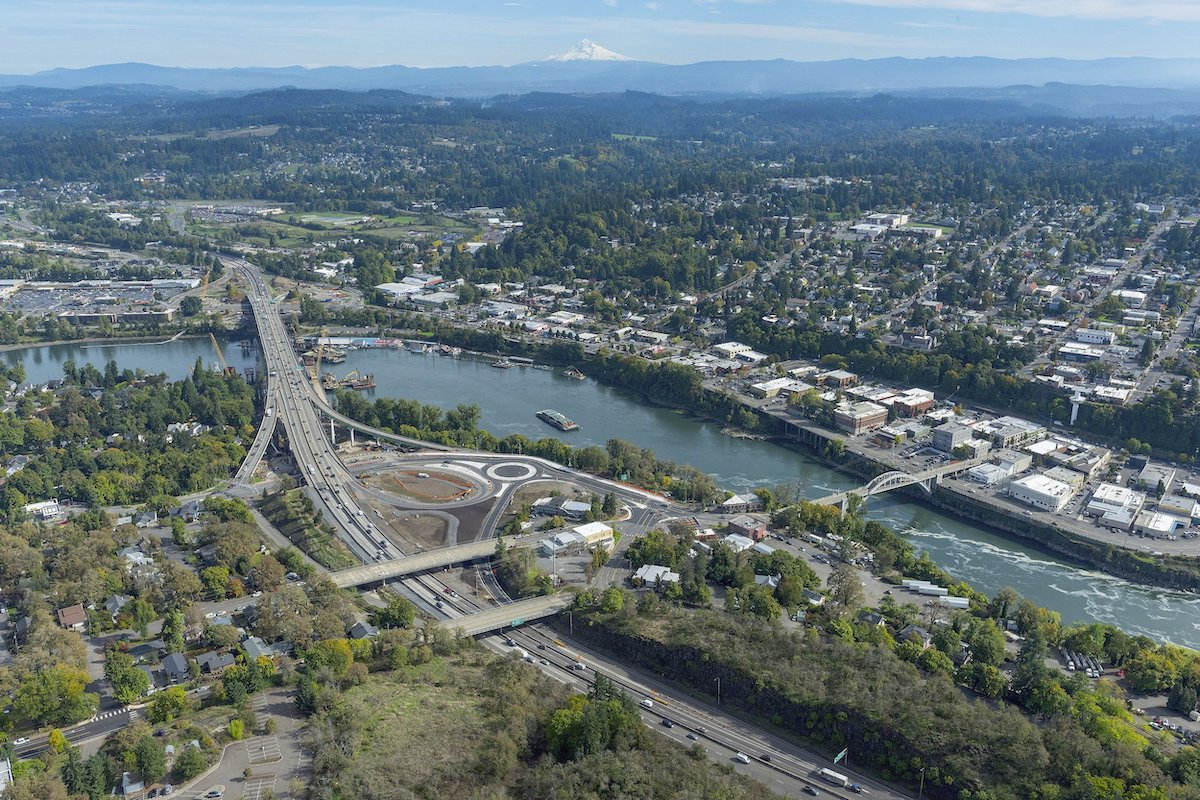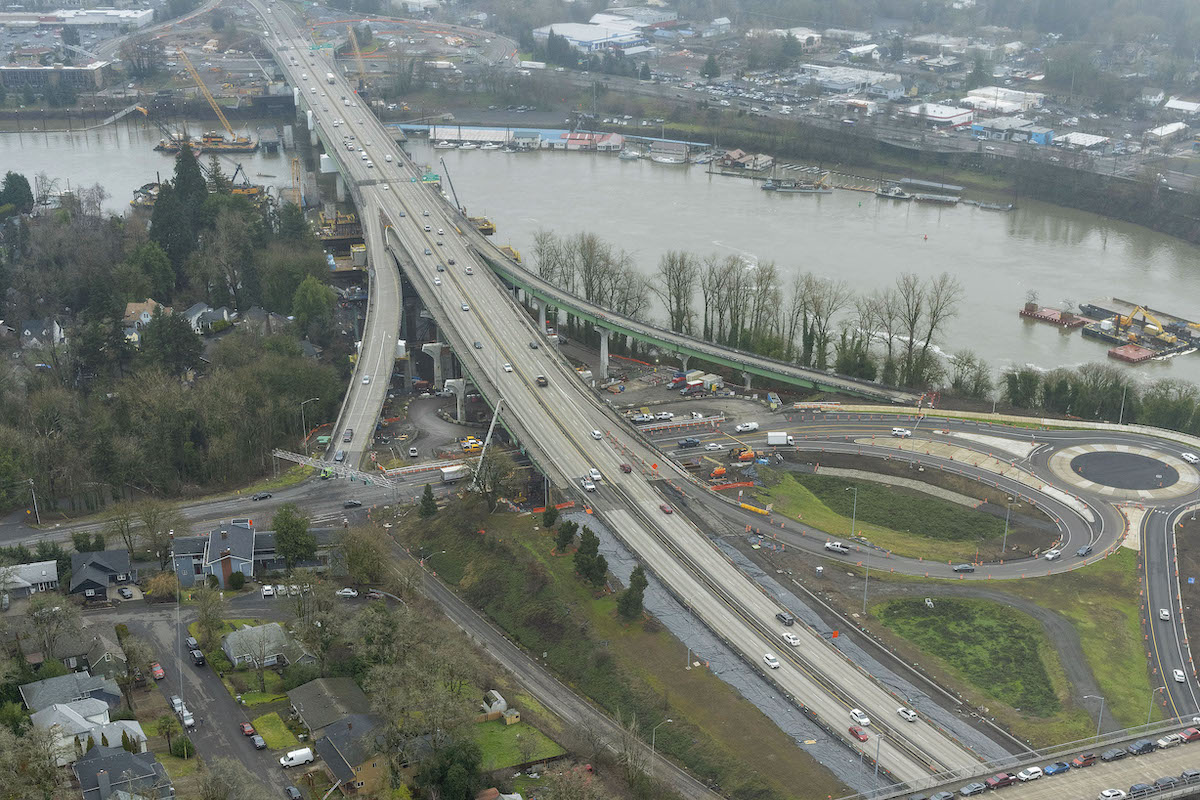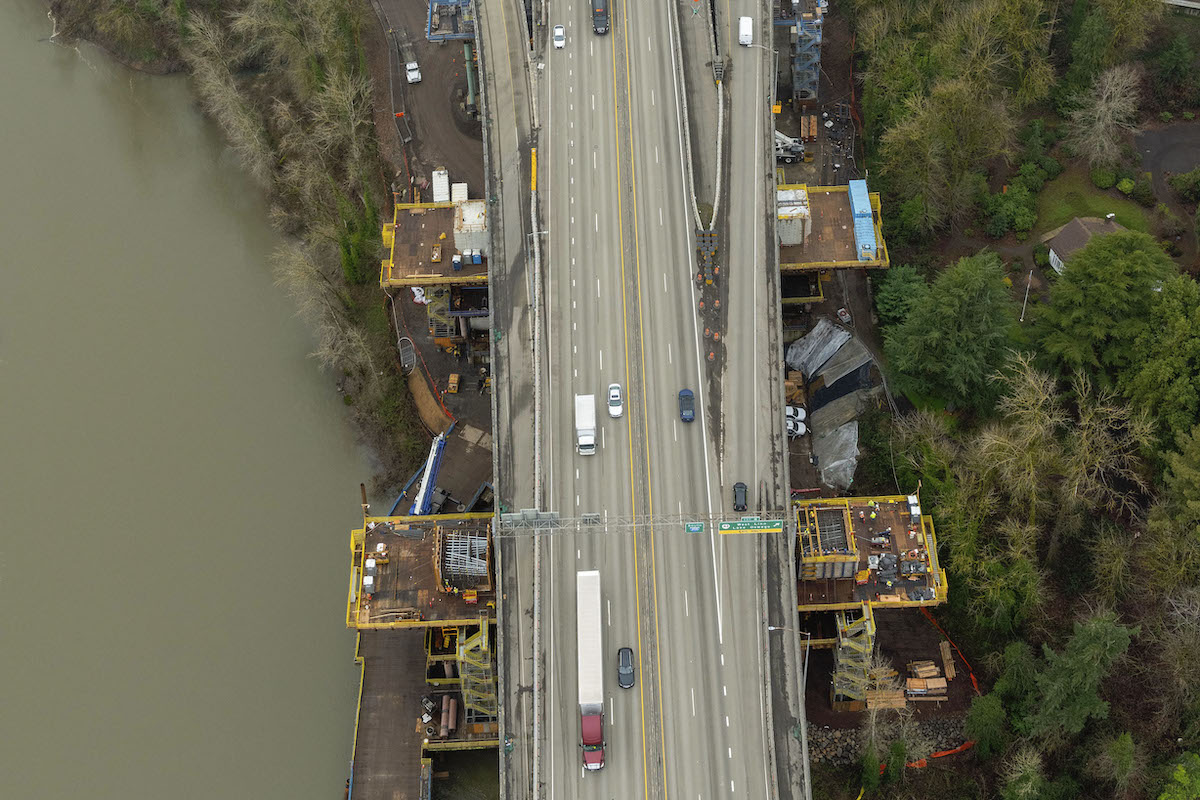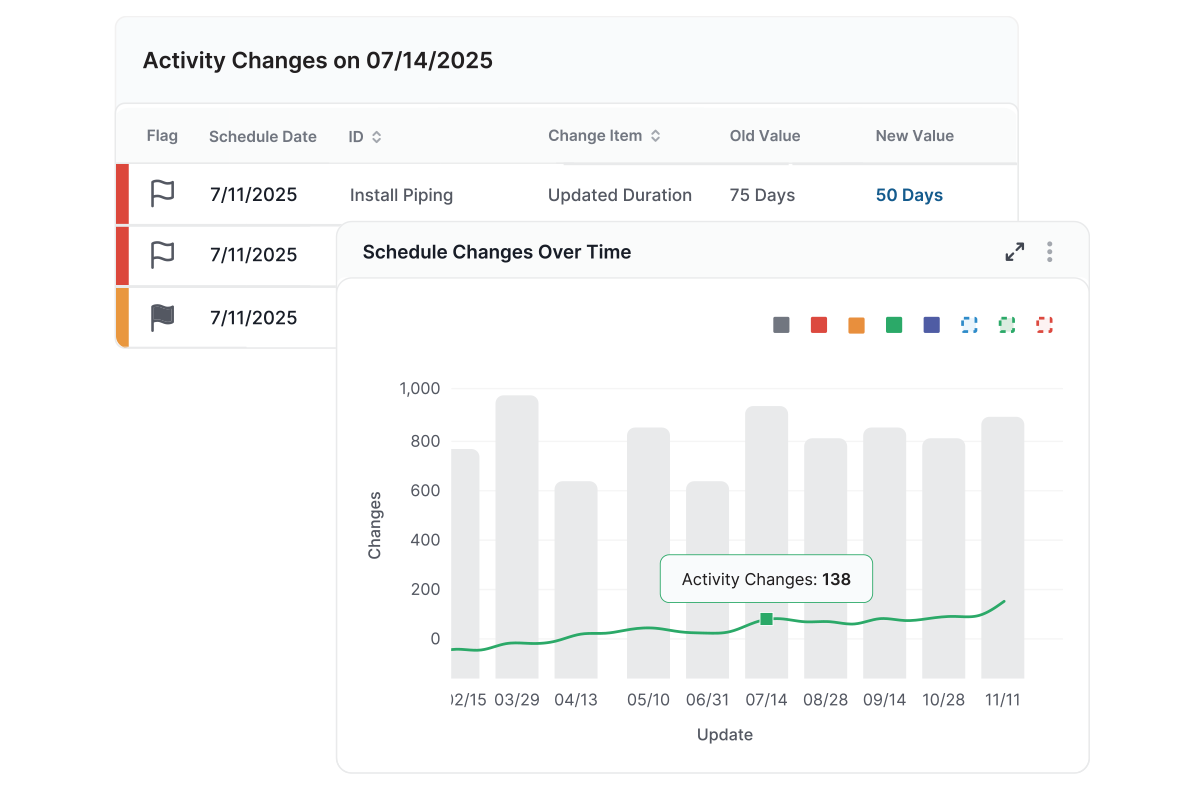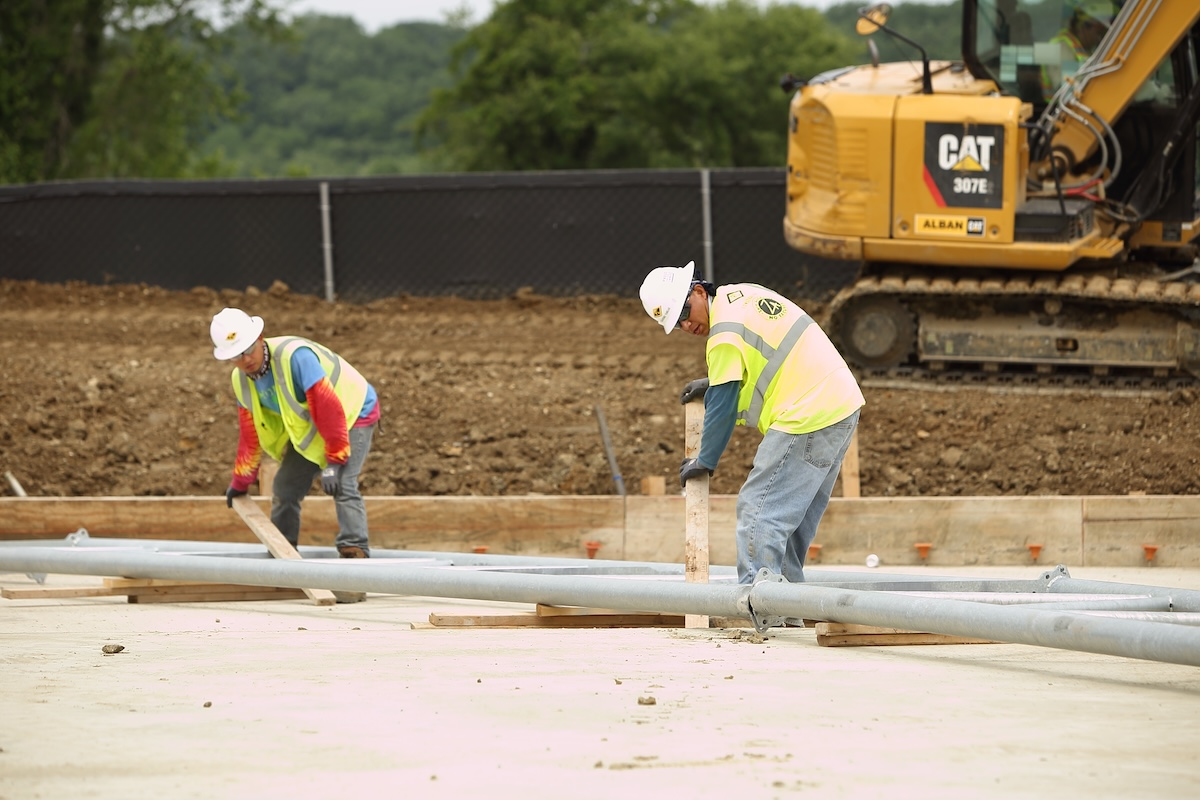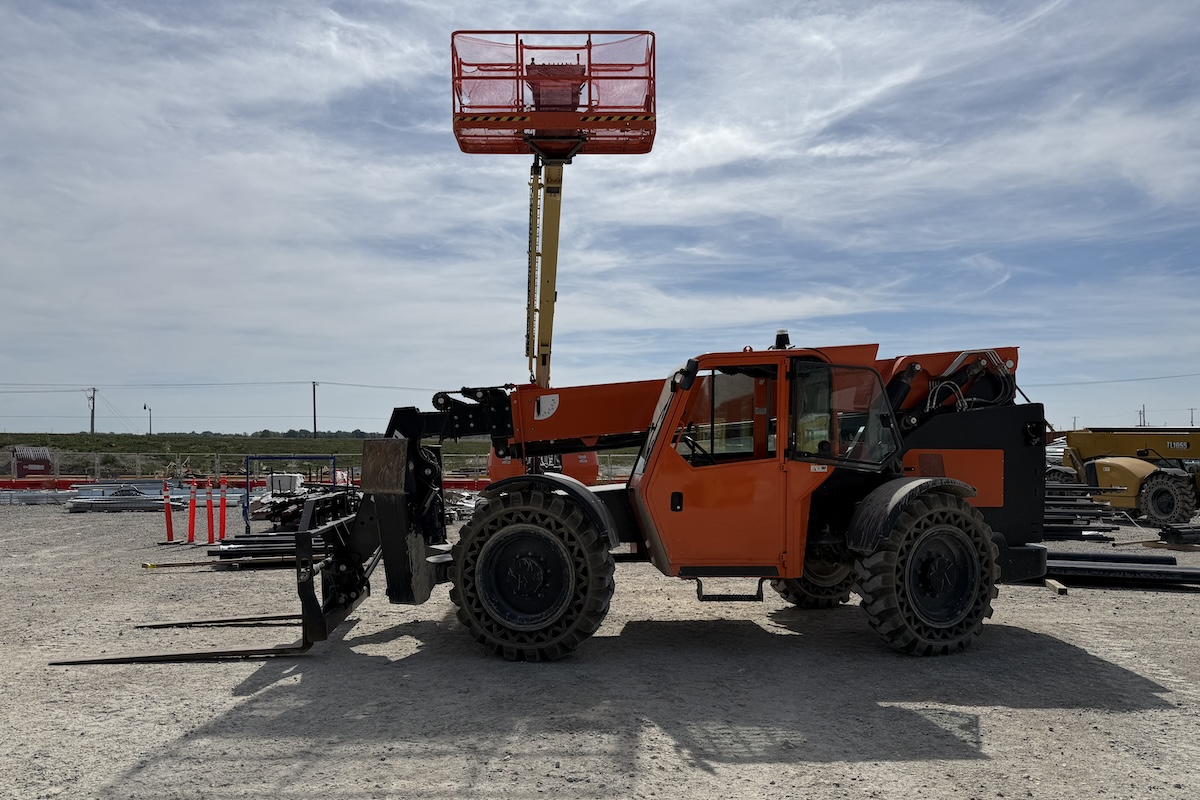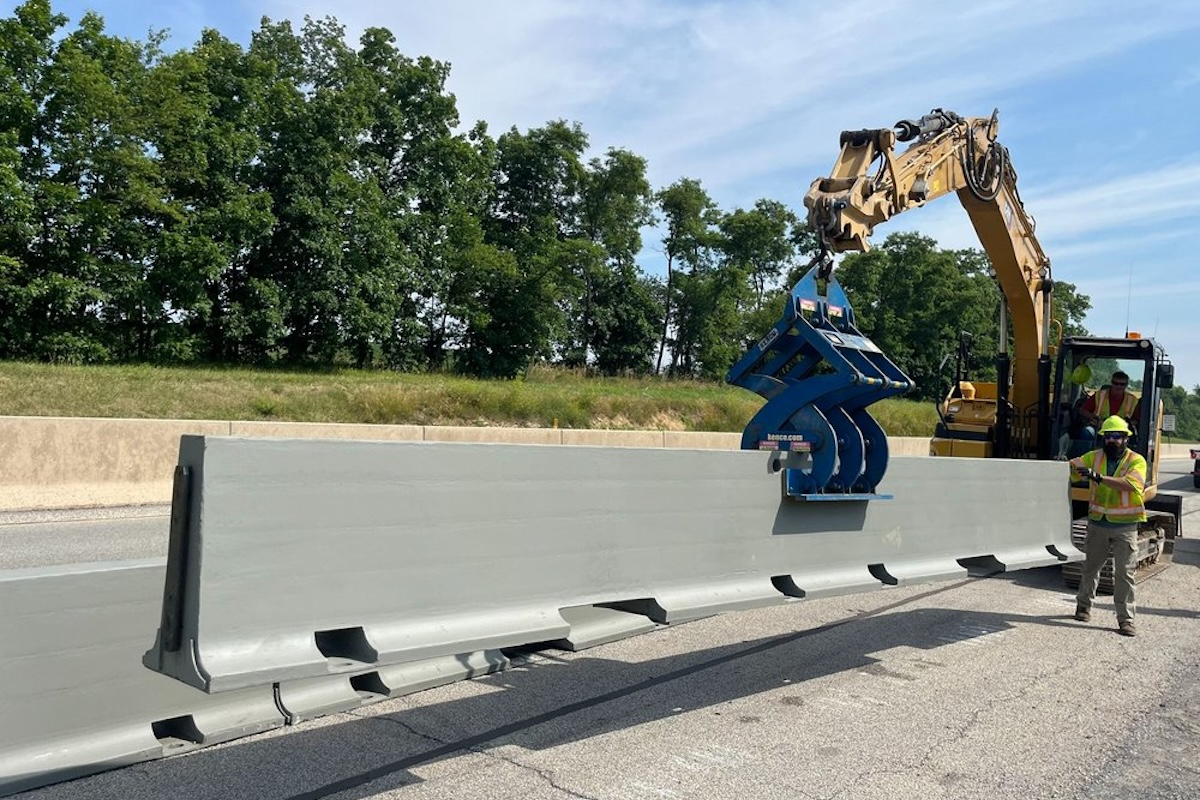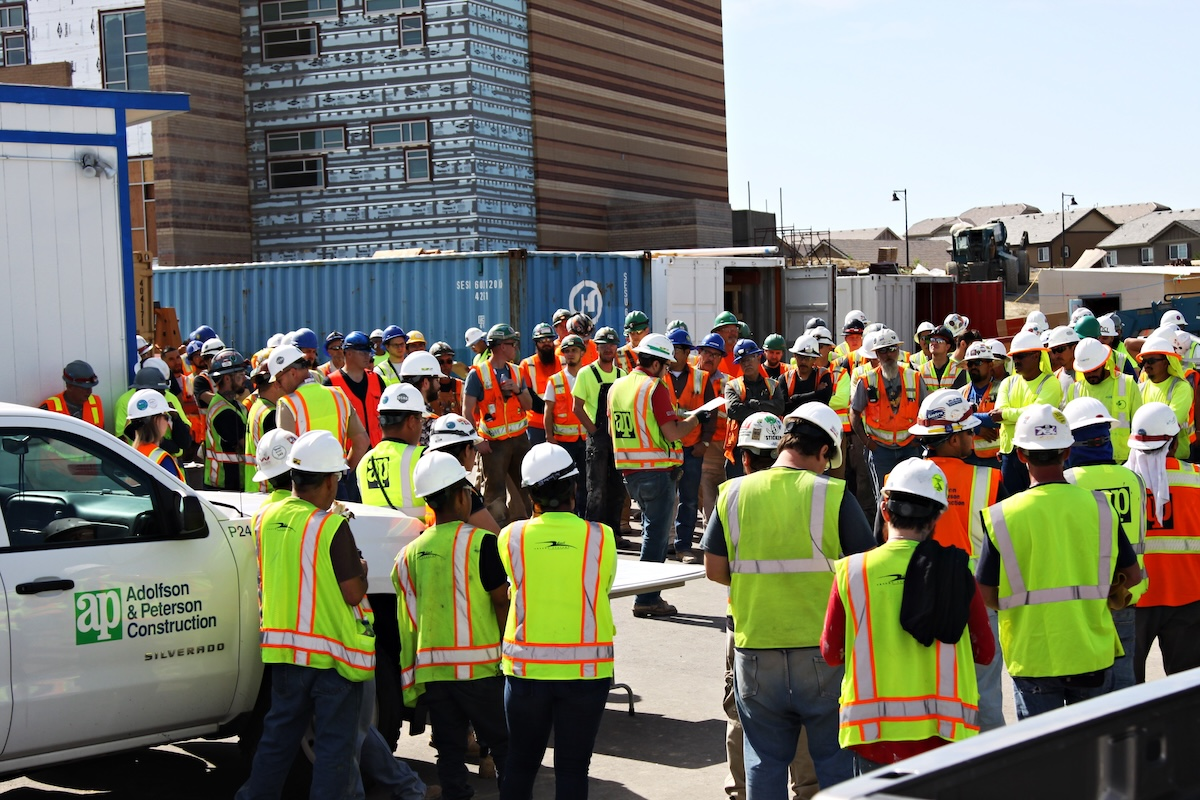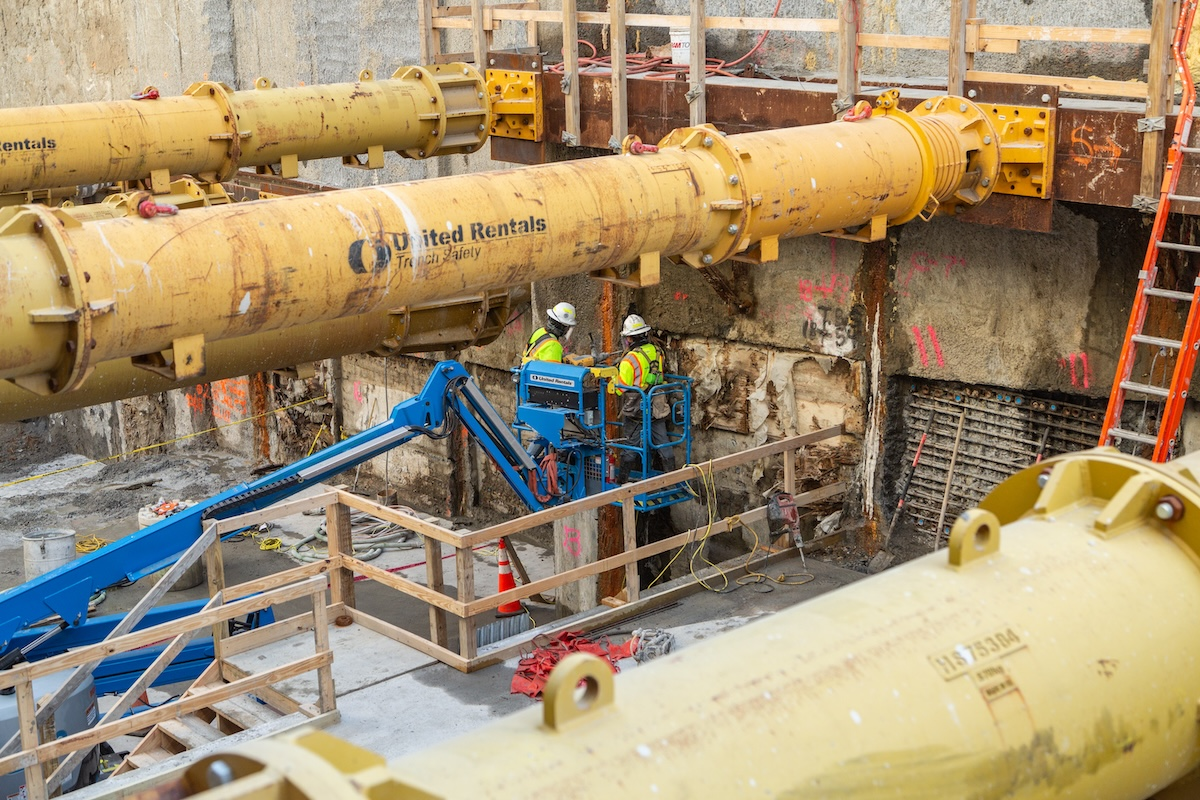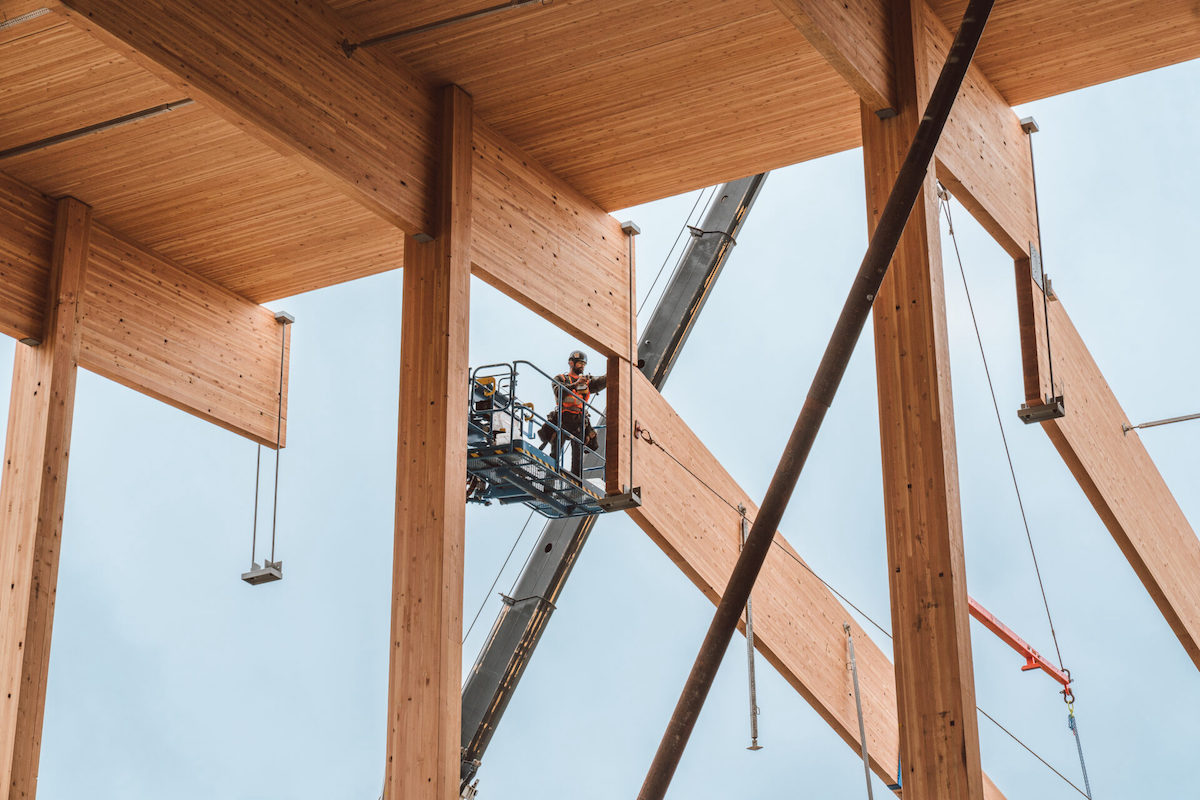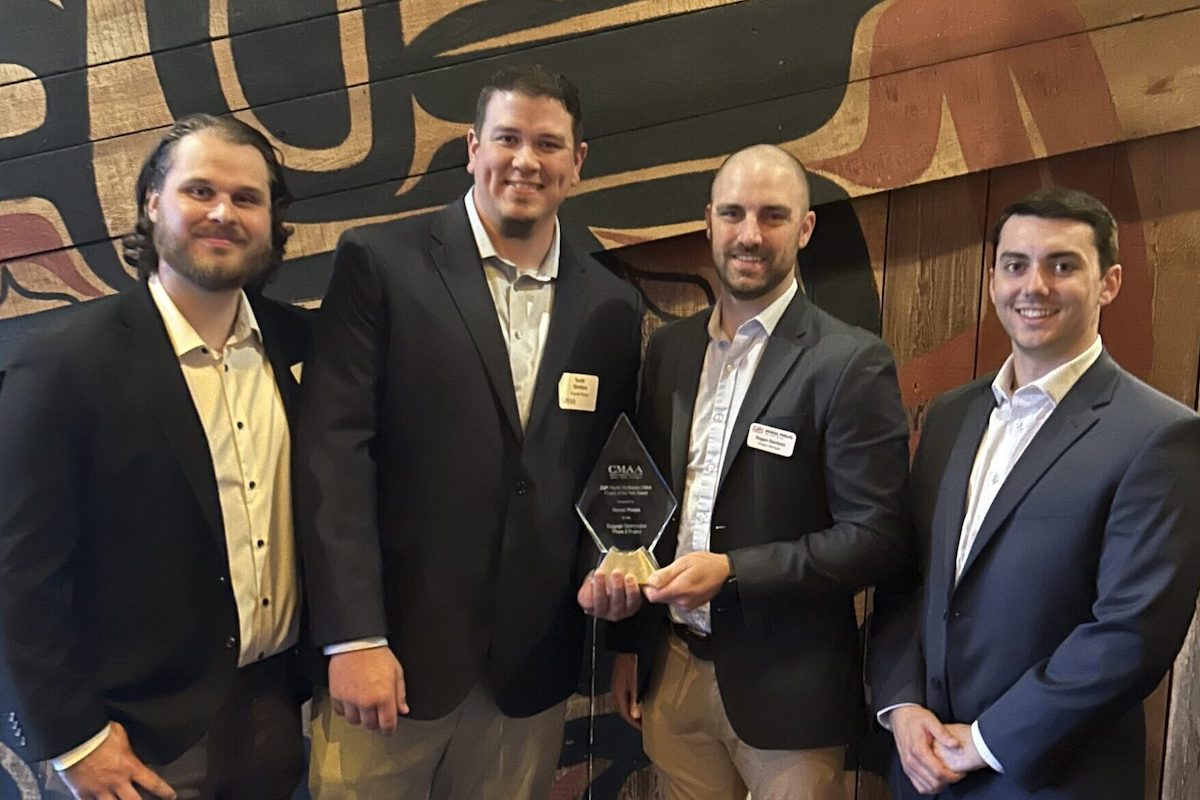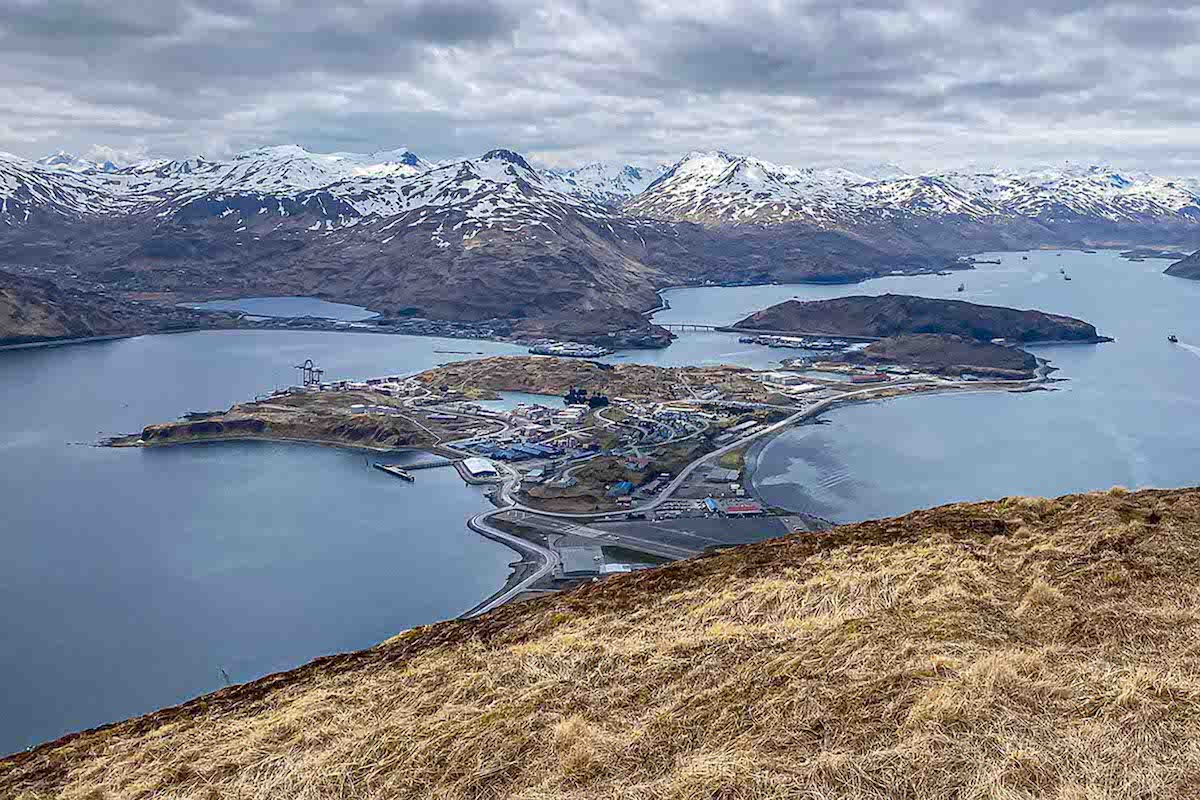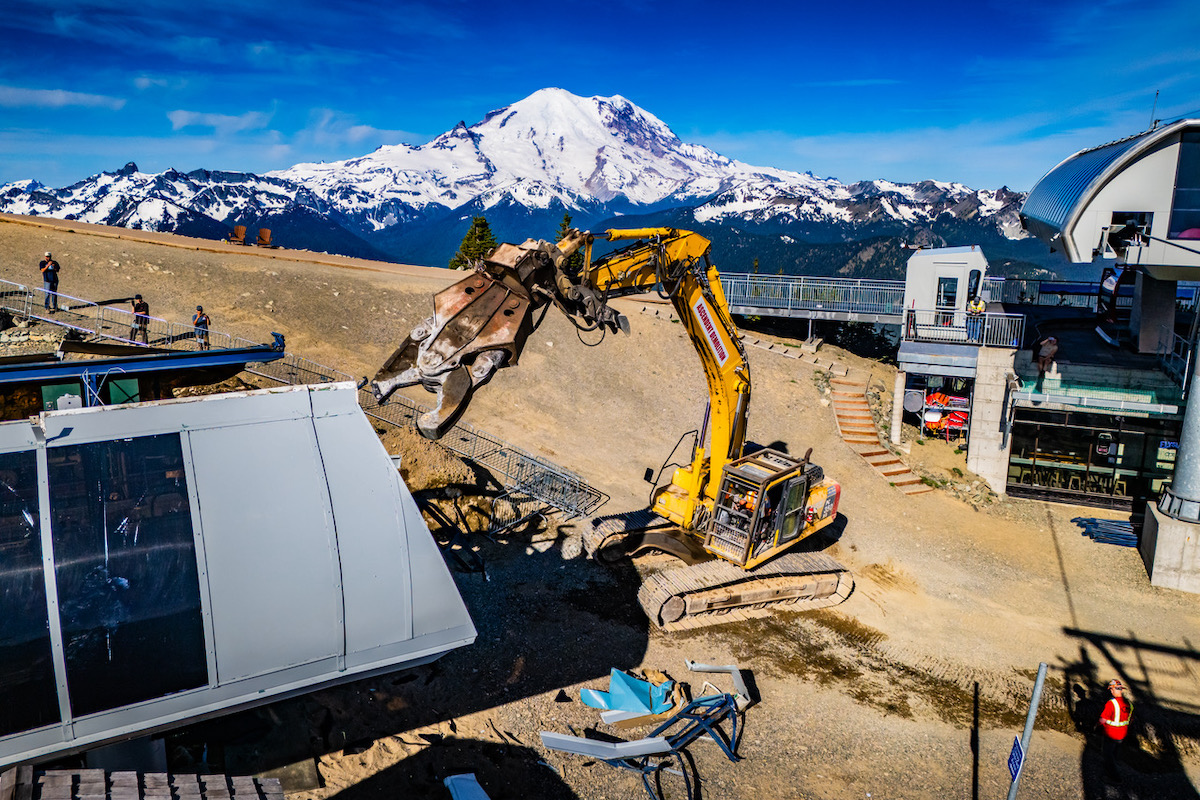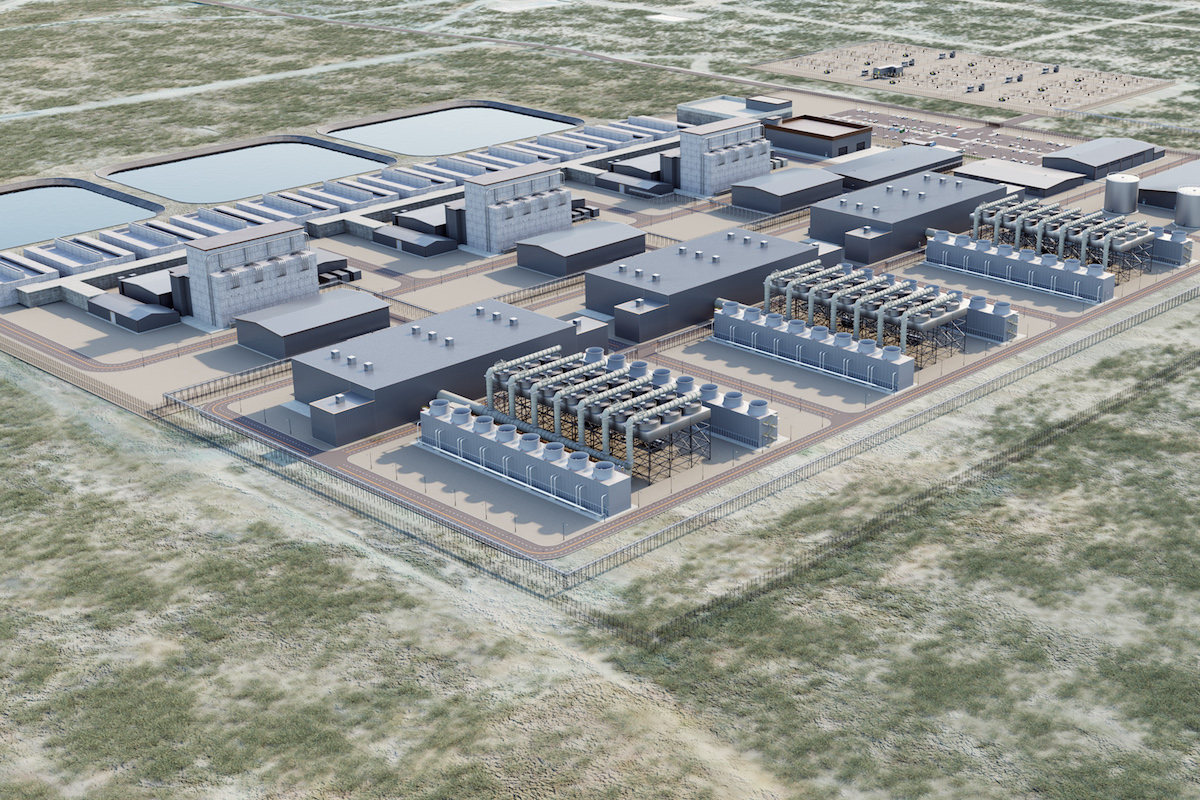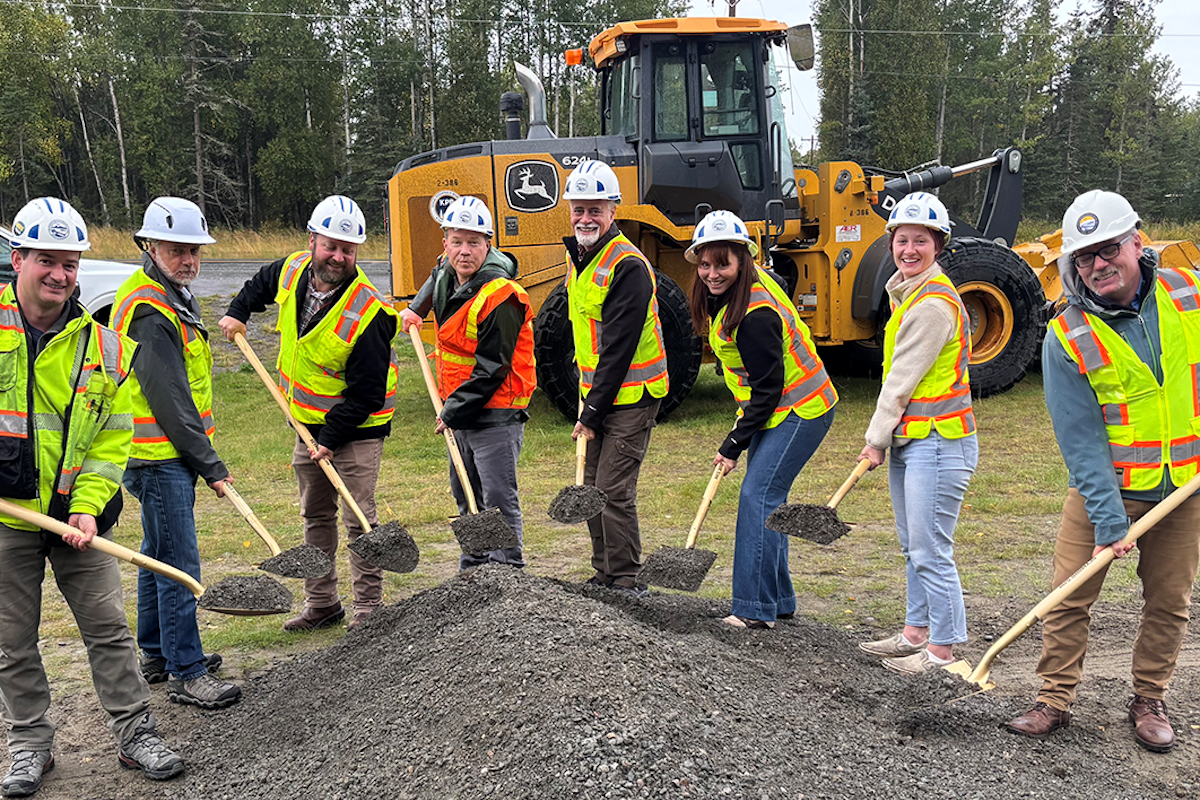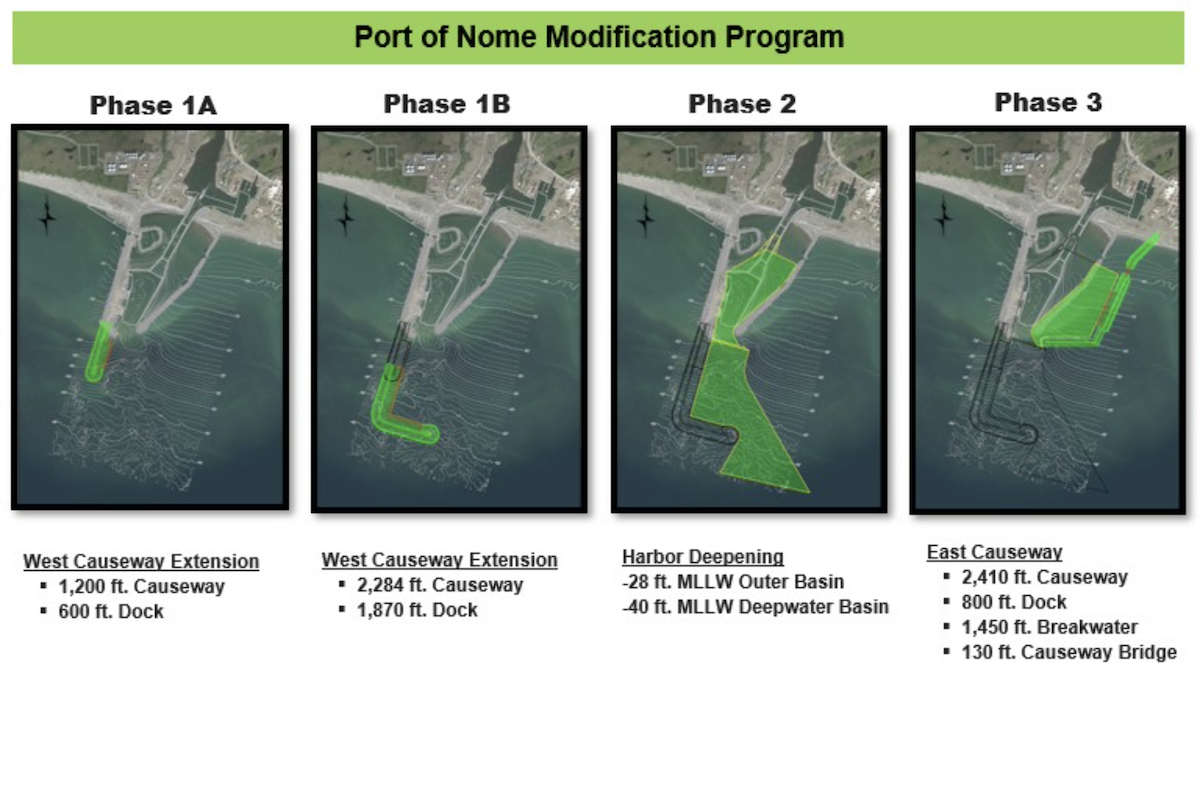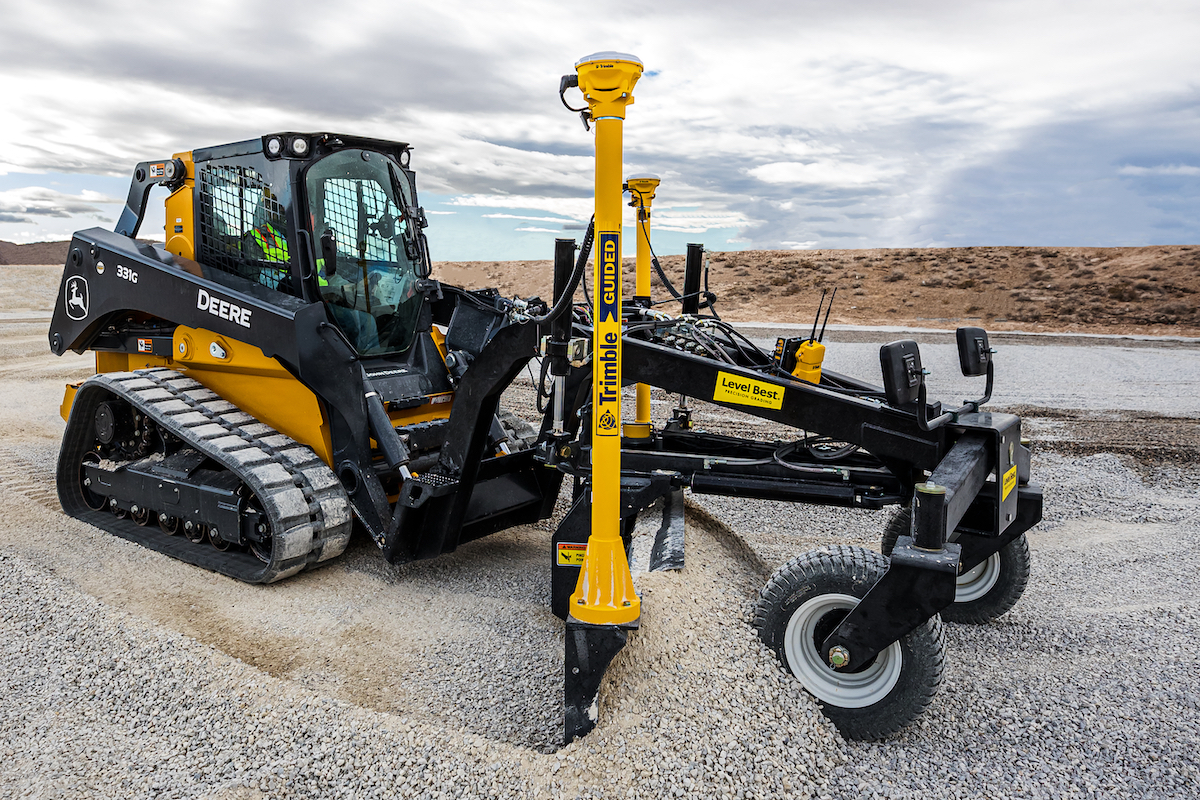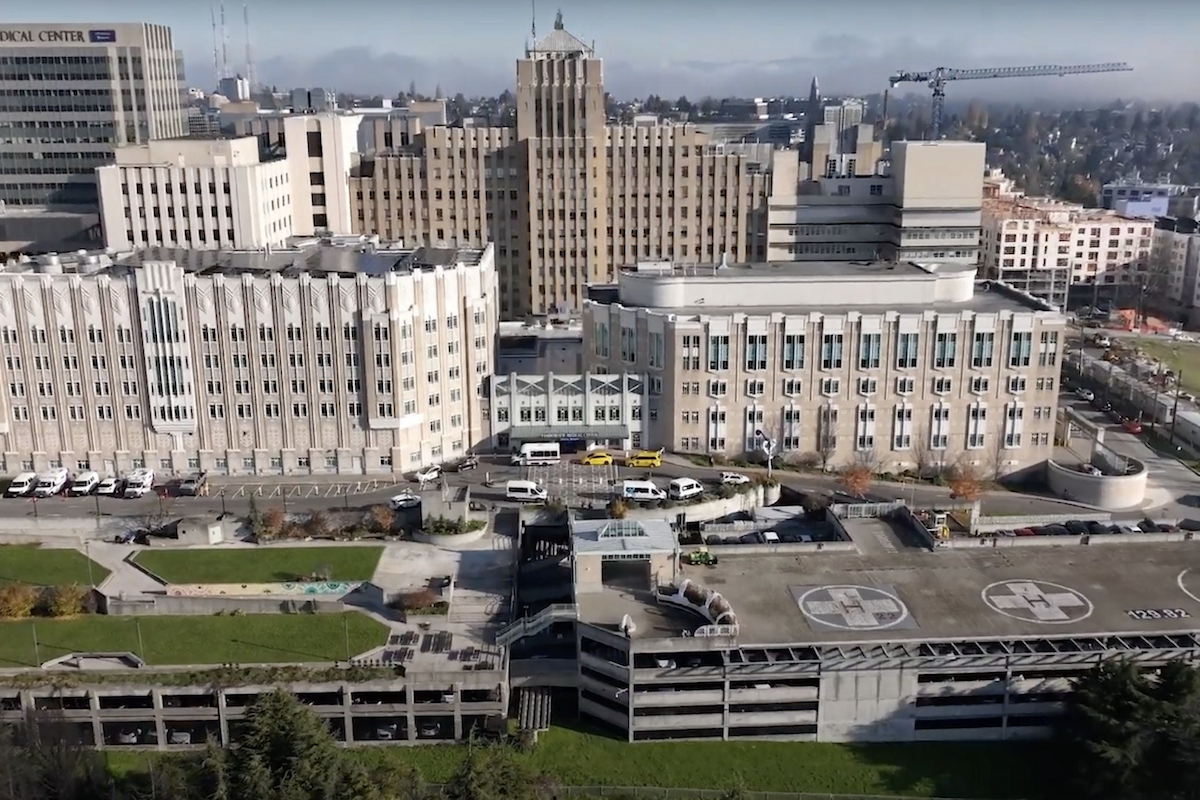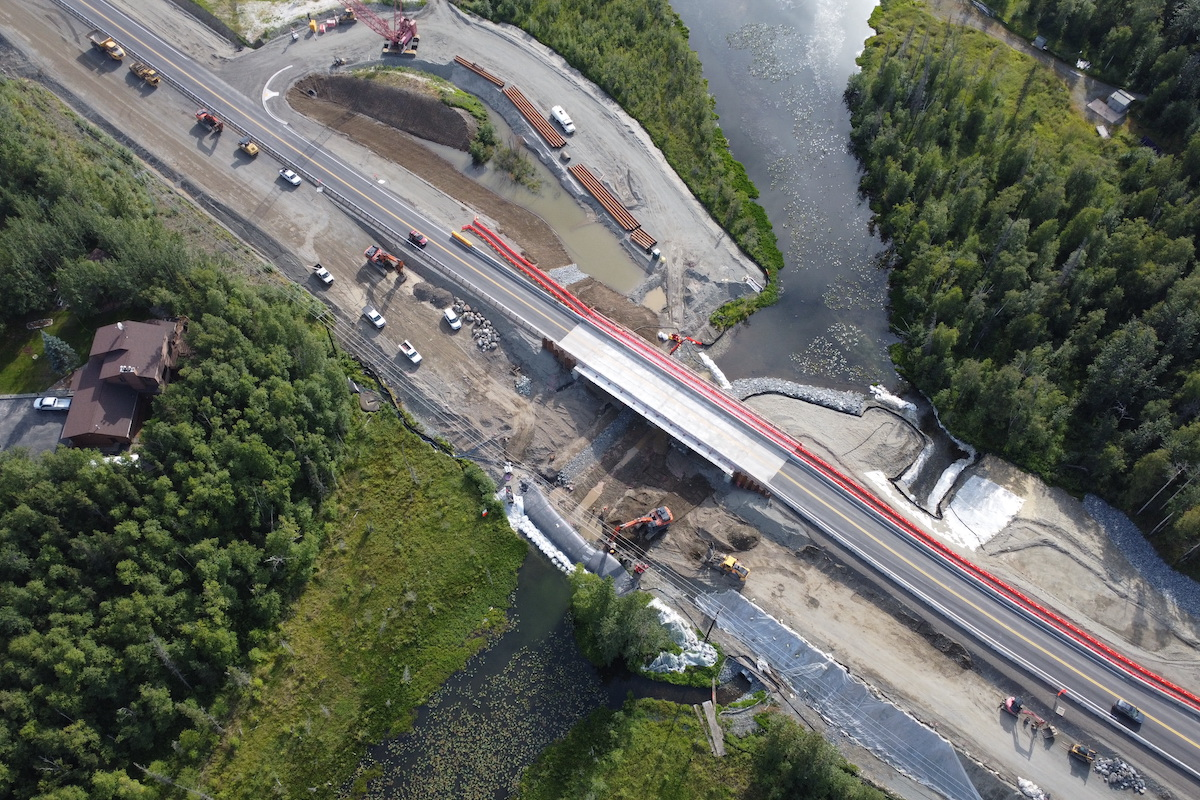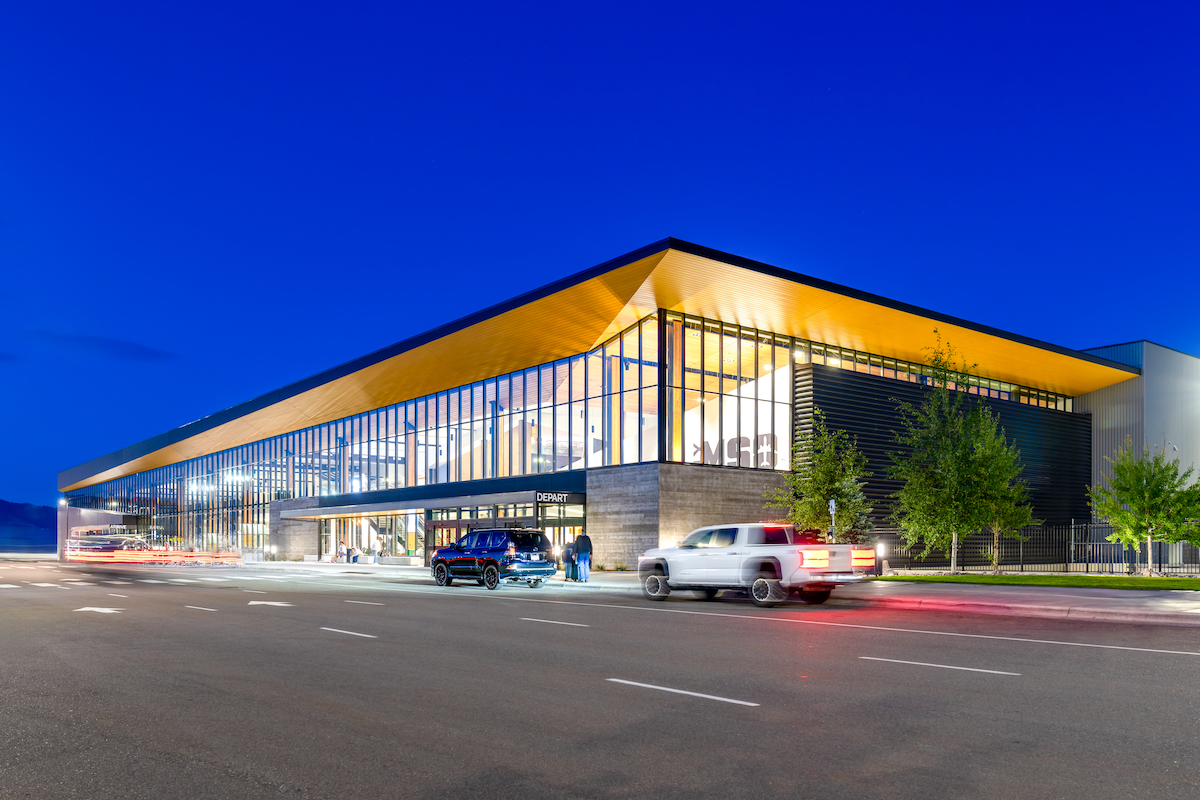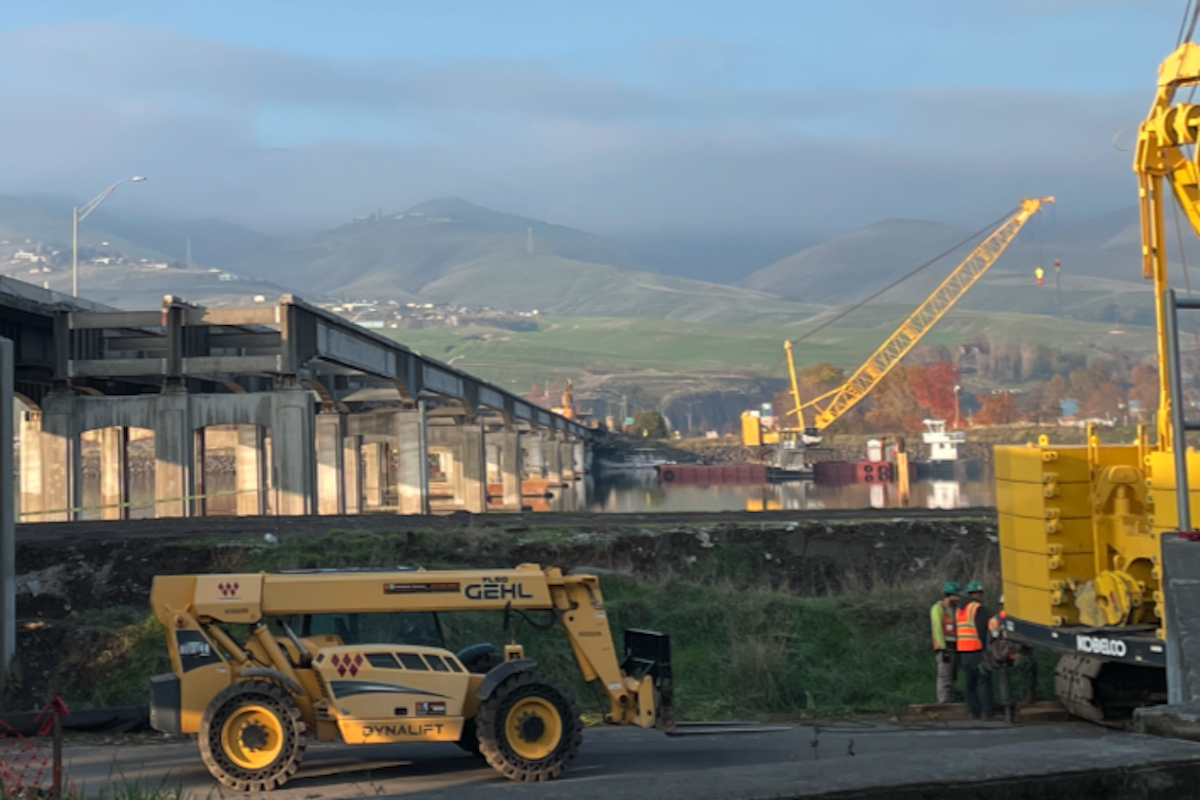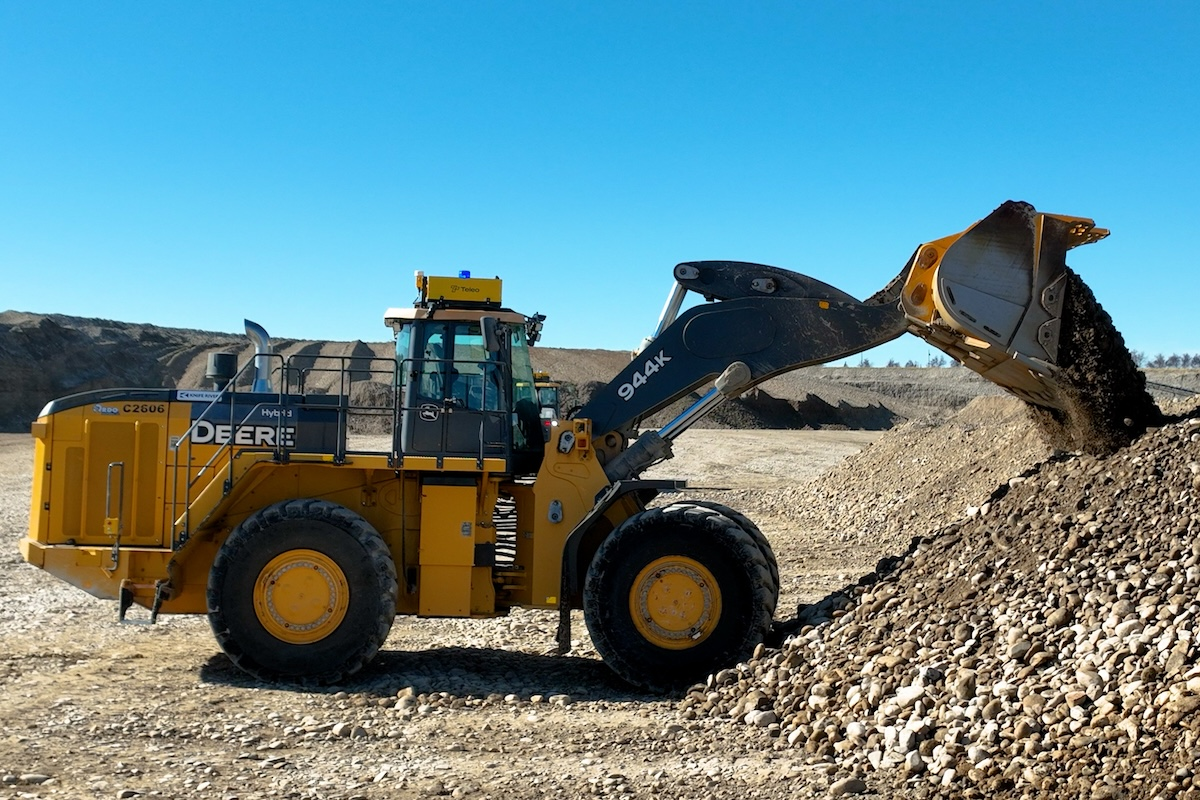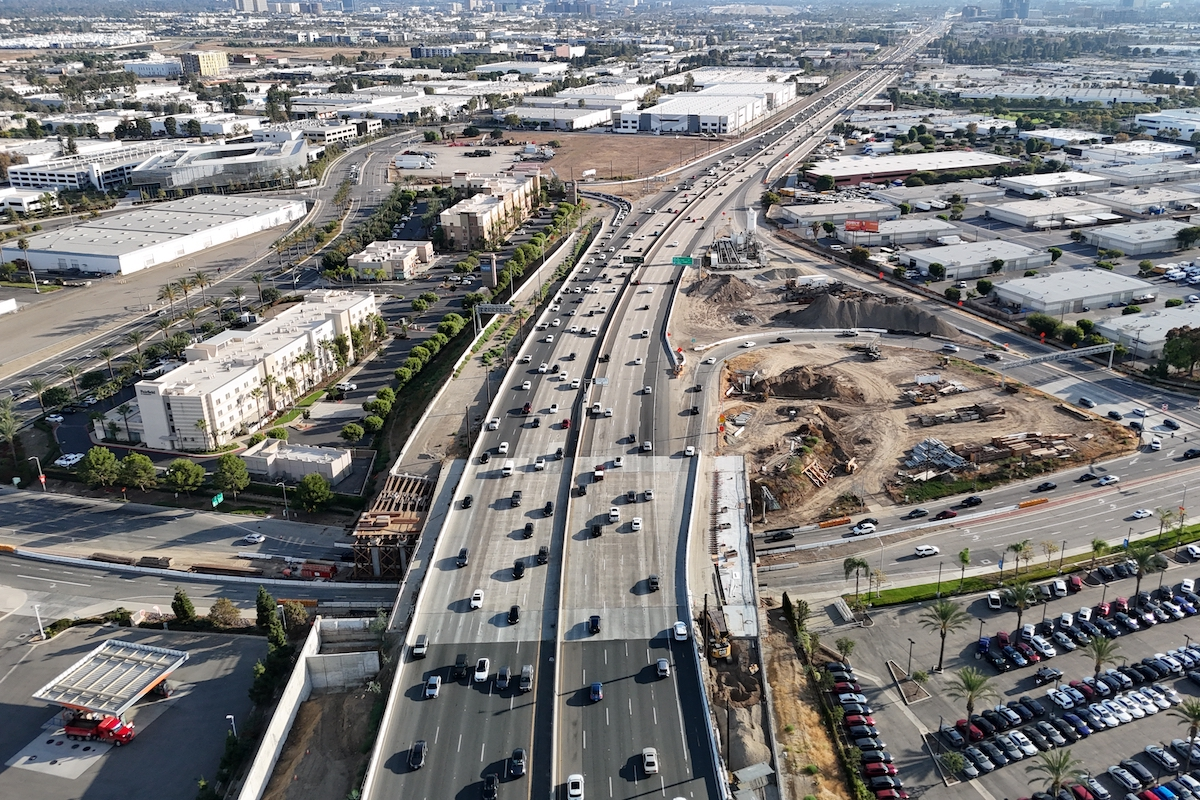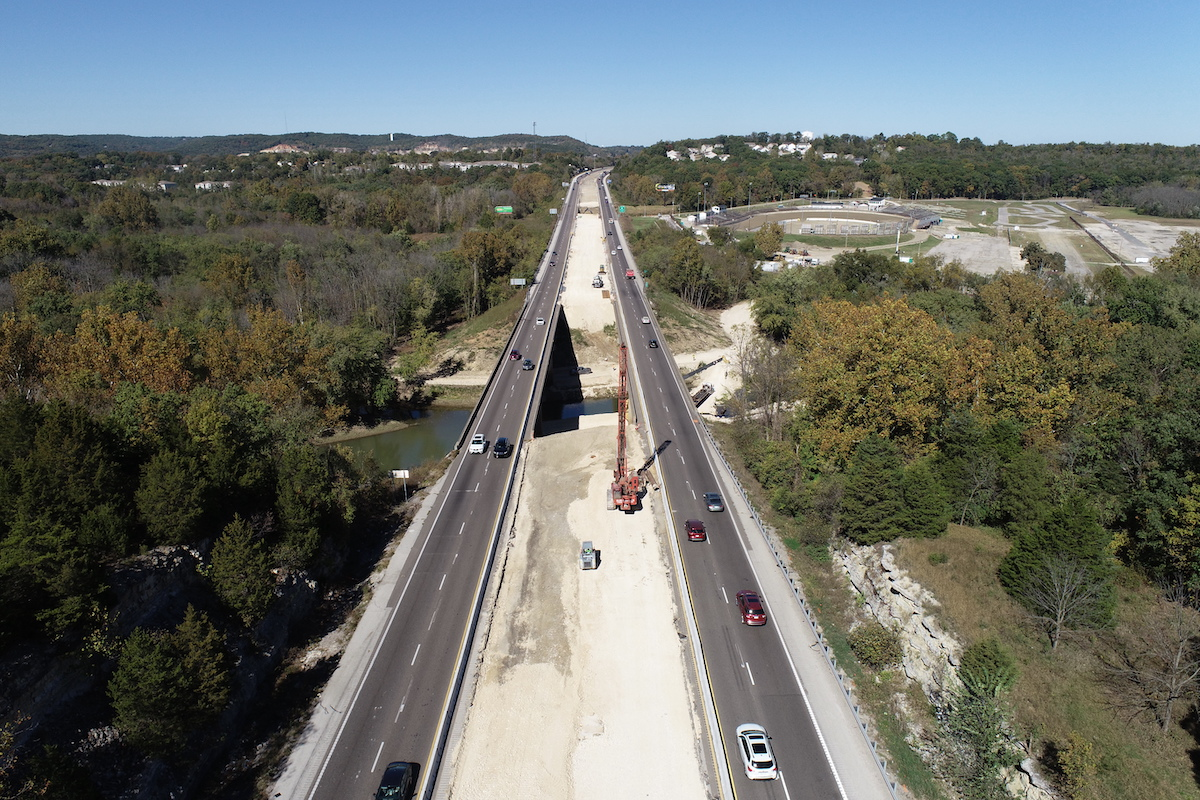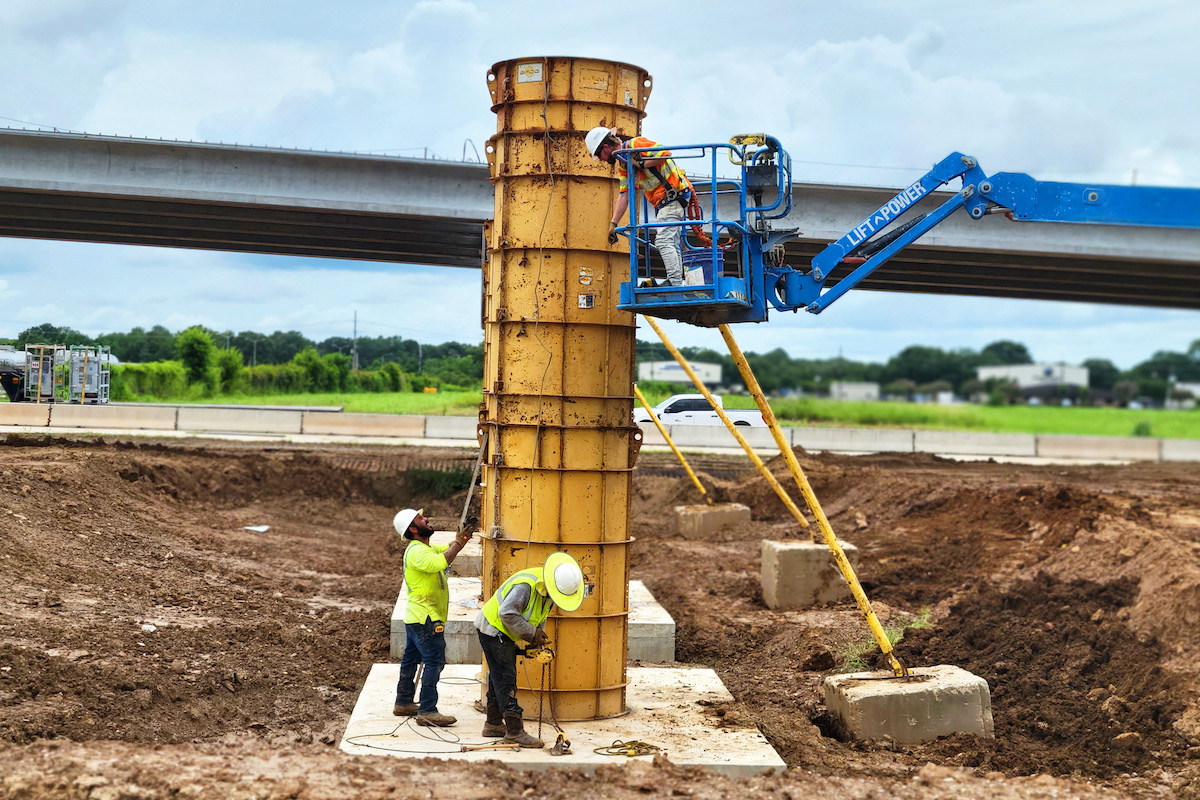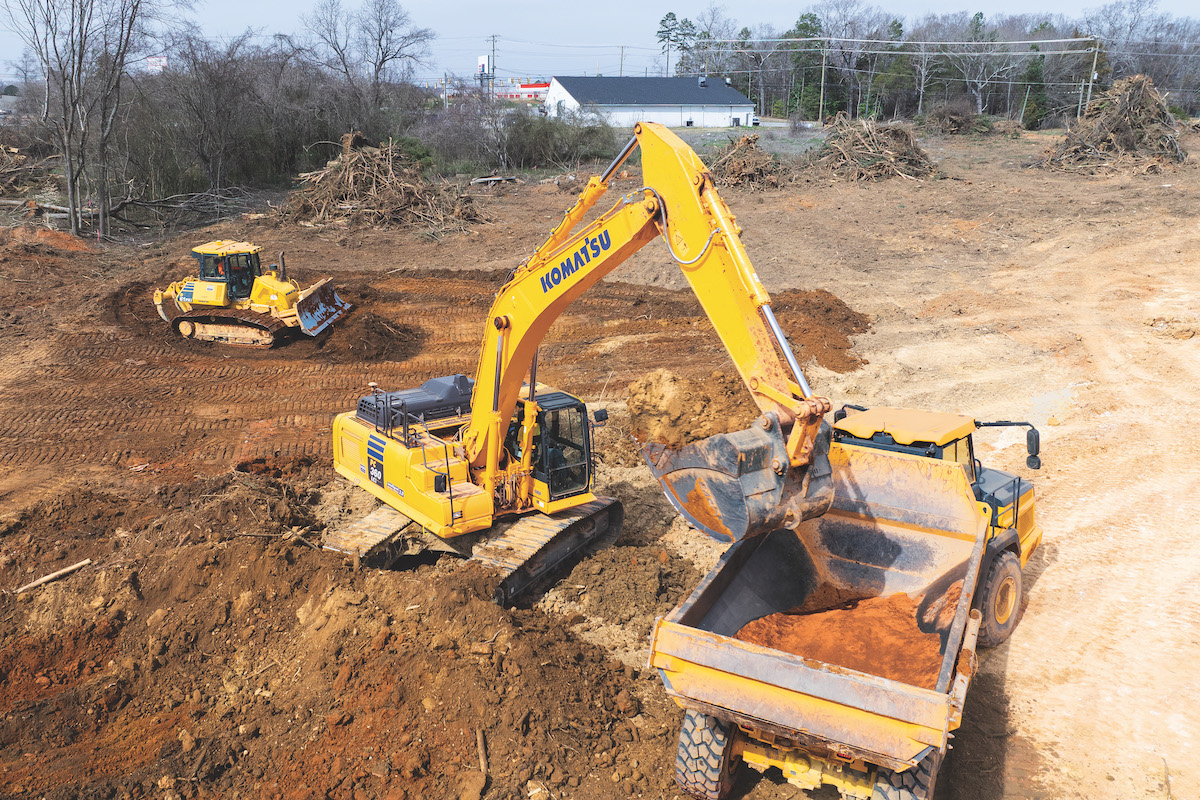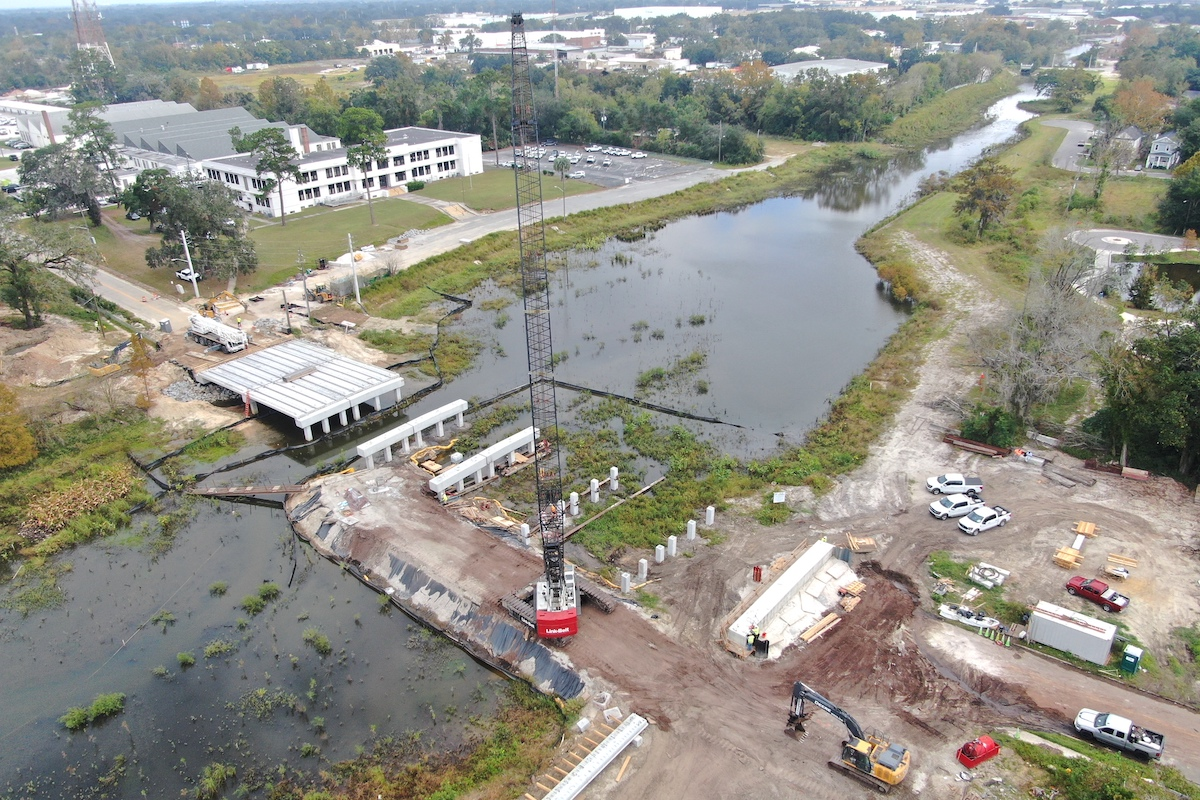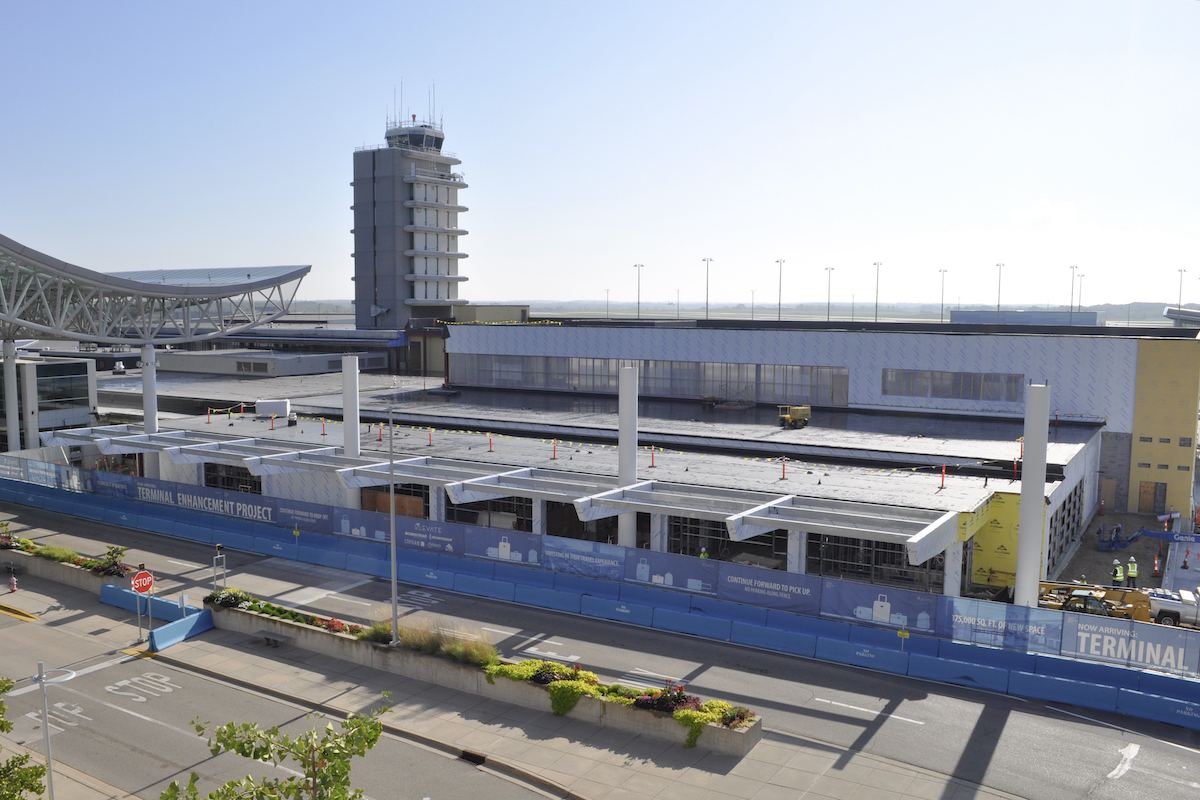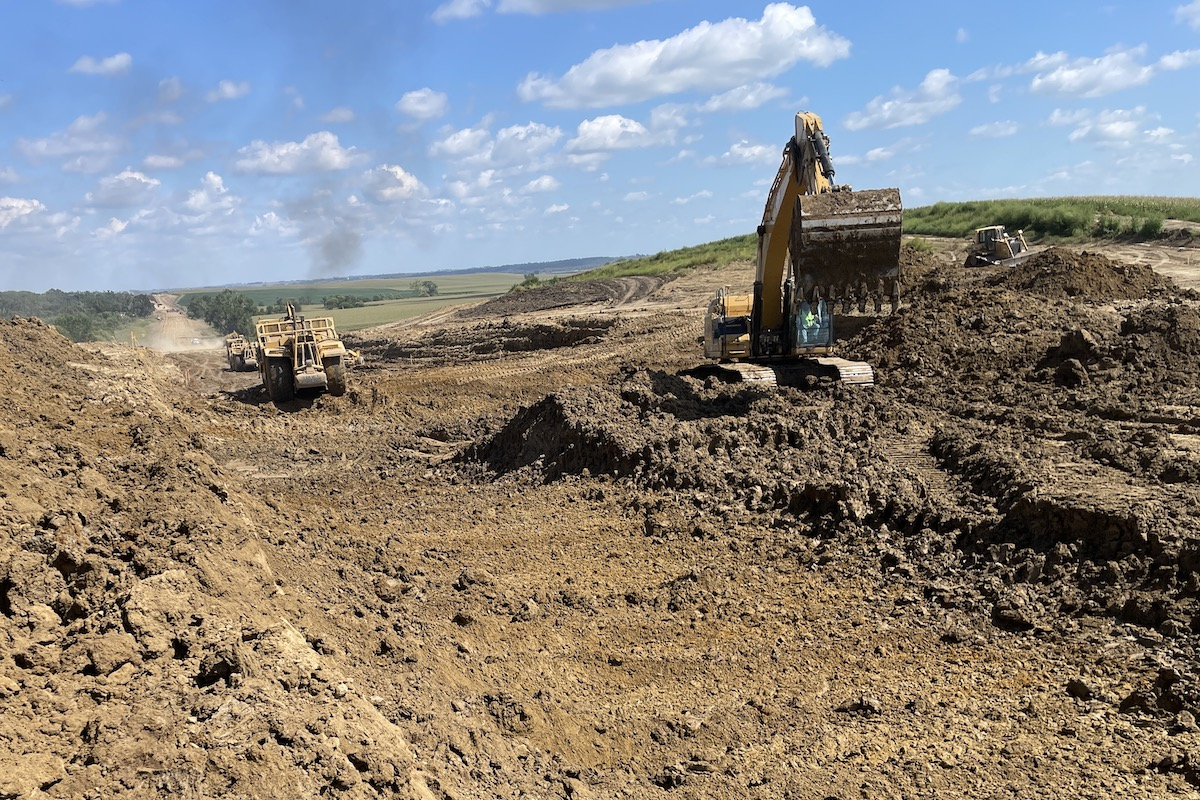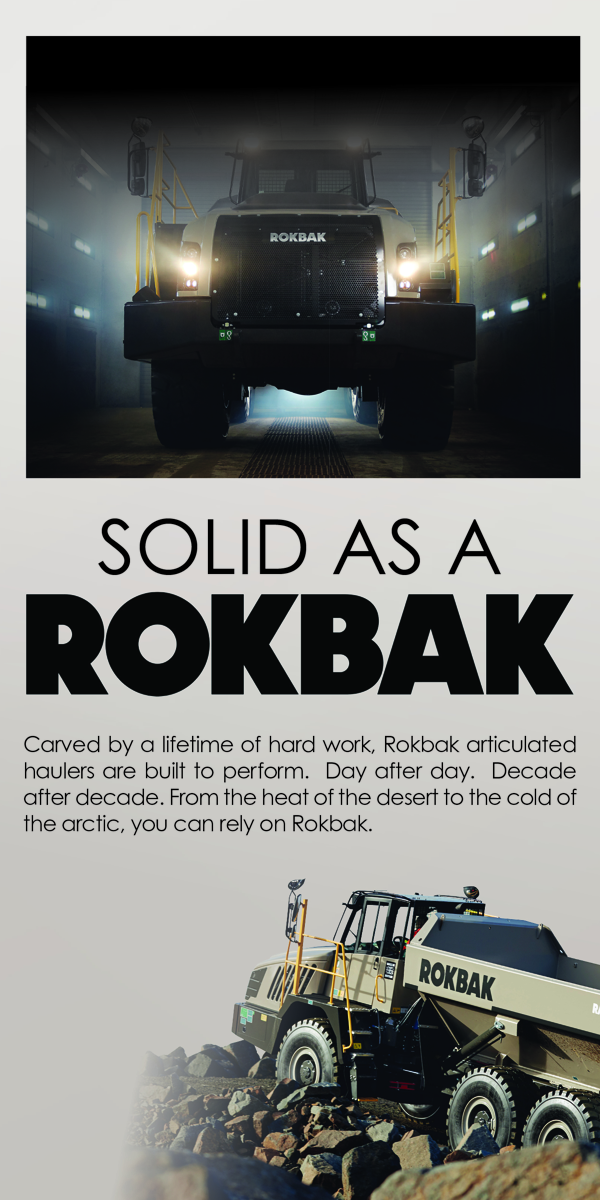While earthquakes are a regular occurrence on the West Coast, most are so small that residents do not even notice them. However, Oregon experiences about 15 earthquakes a year that are strong enough to be felt, according to the Multnomah County website. The state seldom has earthquakes that measure as a magnitude 9.0 or higher and cause significant damage, but scientists believe an earthquake of this scale could occur in the near future.
The concern about this impending major earthquake is one of the driving factors behind the Oregon Department of Transportation’s (ODOT) I-205 Improvements Project, which is taking place just south of Portland, Oregon. A significant element of the project — led by general contractor, Kiewit Infrastructure West Co. — is the work on the 2,717-foot-long Abernethy Bridge.
According to the project website, “the Abernethy Bridge construction project is ODOT's largest construction project in over 45 years.” The bridge opened to traffic in May 1970 and is named after George Abernethy, a governor of the area in the 1840s (before Oregon joined the Union).
The Abernethy Bridge consists of steel wide flange girders for the approach superstructure spans and steel box girders for the main span across the river. The bridge is approximately 135 feet wide and has 15 spans and 60 girders.
The six-lane bridge — which has narrow shoulders — spans the Willamette River between Oregon City and West Linn, Oregon. It has an average daily traffic of over 100,000 vehicles, including 7,000 to 14,000 freight trucks per day.

| Your local Gomaco dealer |
|---|
| American Construction Supply |
| Tri-State Truck & Equipment Inc |
Other project elements include improving on- and off-ramps near the bridge, along with a new roundabout connecting OR 43 with NB I-205 on the west end of the bridge.
Upon completion of the work, the project website said that the bridge will be "the first earthquake-ready interstate bridge over the Willamette River in the Portland area."
The Abernethy Bridge is being built in preparation for an earthquake along the Cascadia Subduction Zone, which the Oregon state website said is a “700-mile fault that runs from northern California up to British Columbia and is about 70 to 100 miles off the Pacific coast shoreline. There have been 43 earthquakes in the last 10,000 years within this fault. The last earthquake that occurred in this fault was on January 26, 1700, with an estimated 9.0 magnitude. This earthquake caused the coastline to drop several feet and a tsunami to form and crash into the land."
According to the state website, scientists say there is about a 37 percent chance that a megathrust earthquake with a magnitude of 7.1 or higher will occur in this fault zone in the next 50 years, with its effects likely to be felt across the Pacific Northwest. Oregon also faces the risk that a magnitude 9.0 or higher earthquake will be triggered by the Cascadia Subduction Zone, which could generate a tsunami as high as 100 feet, affecting the state’s coastal area.

| Your local Superior dealer |
|---|
| Westate Machinery Co |
The Willamette River flows north to south through most of Oregon, with Portland on the east side of the river and much of the Willamette Valley on the west side. A significant percentage of the state's population calls the valley home. If road transportation to the valley is cut off for any time, it would cause massive challenges for emergency services.
The Abernethy Bridge’s seismic retrofit includes installing new foundations — primarily drilled shafts at most piers — along with reinforced concrete columns and post-tensioned concrete crossbeams cast around the existing ones.
“The team is replacing all existing bearings with new seismic isolator bearings and reinforcing the steel superstructure with additional stiffeners and bracing,” said Todd Makela, Kiewit Project Manager.
“A foundation subcontractor, Malcolm Drilling, handled the complex drilled shaft work,” Makela added. “To meet the challenge, Malcolm deployed a 12-foot-diameter oscillator manufactured in Germany — the most powerful of its kind in North America.”

| Your local Metso Minerals Industries Inc dealer |
|---|
| Westate Machinery Co |
| PacWest Machinery |
In addition to seismic upgrades, the project includes capacity improvements. The approach superstructure is being widened with new steel wide flange girders and reinforced concrete bridge decks added to both sides of the existing bridge.
For the main span, crews are installing steel cantilever brackets on both the outside and inside box girders to support new concrete decks.
In order to create the space needed to add the cantilever brackets and deck to the inside box girders, the existing northbound and southbound main span structures must each be shifted approximately 8 feet.
To complete the shift, the team is using specialized equipment to lift the structure, slide it laterally, and lower it onto the new seismic isolator bearings — a precise operation critical to ensuring the bridge’s long-term resilience.

| Your local Somero dealer |
|---|
| American Construction Supply |
Delivering one of Oregon’s most significant seismic retrofit projects requires not only technical expertise, but also the ability to anticipate and adapt to challenges as they arise. According to Makela, that is where Kiewit’s strength lies.
“We’ve built a team that thrives on solving complex problems,” Makela said. “We knew it would be a challenging job, but so far we’ve met every challenge with solutions that keep the project moving forward.”
Anytime work occurs in the water, teams must secure detailed environmental permits.
"The project requirements include some tight in-water work windows for the installation of the temporary work bridge and drilled shafts in the river," Makela said.

| Your local Bobcat dealer |
|---|
| Pape Material Handling |
The team encountered differing site conditions early in the project, which made it challenging to accomplish the work within the in-water work window. Kiewit and ODOT worked with environmental agencies to modify the permit requirements.
The team drilled large, deep shafts to make the bridge resistant to earthquakes. The project required 28 shafts that varied in diameter between 6 to 12 feet and had depths of up to 250 feet. The 5- to 20-foot-deep rock sockets were installed in up to 25,000 psi basalt, which required the use of the special equipment from Germany. Makela noted that the team had to perform testing before completing the shafts.
"Each shaft required SID testing to verify and confirm competent material at the shaft bottom, as well as Thermal Integrity Profiling and Cross-Hole Sonic Logging to verify the integrity of the shaft concrete," he said.
"The river shafts were drilled from an elevated temporary work platform that was designed to resist the significant loads induced by the large, powerful oscillator," Makela added.

| Your local Trimble Construction Division dealer |
|---|
| SITECH Northwest |
Kiewit also employed an innovative perched cofferdam system.
"We came up with a perched cofferdam system that was suspended above the bottom of the river, allowing it to be installed and removed outside of the in-water work window," Makela said. This sped up the process because the installation and removal of traditional cofferdams would have been limited to a few months each summer.
The design of the new bridge required the new crossbeams to be poured around the existing ones that are supporting the bridge and carrying traffic.
"To alleviate concrete quality risks associated with concrete setting and curing around an existing structure while the falsework is deflecting during the pour, we developed a scheme to pour the crossbeams in multiple stages instead of one large pour," Makela said.

| Your local Volvo Construction Equipment dealer |
|---|
| PacWest Machinery |
"We also designed an innovative falsework system to work with the multiple-stage pour scheme and minimize falsework deflections while pouring concrete around the existing structure," he added.
Kiewit was drawn to the I-205 Improvements Project because of its unique and technically challenging design.
"We have experience building technical bridges, along with marine construction experience and a history of successfully delivering large, complex transportation projects,” Makela said.
Kiewit has worked concurrently on most piers/spans on the Abernethy Bridge. The project is currently scheduled to be complete in late 2026.

| Your local Gomaco dealer |
|---|
| American Construction Supply |
| Tri-State Truck & Equipment Inc |
Once complete, the updated Abernethy Bridge will provide an earthquake-resilient route to the Willamette Valley in the event of an earthquake.

